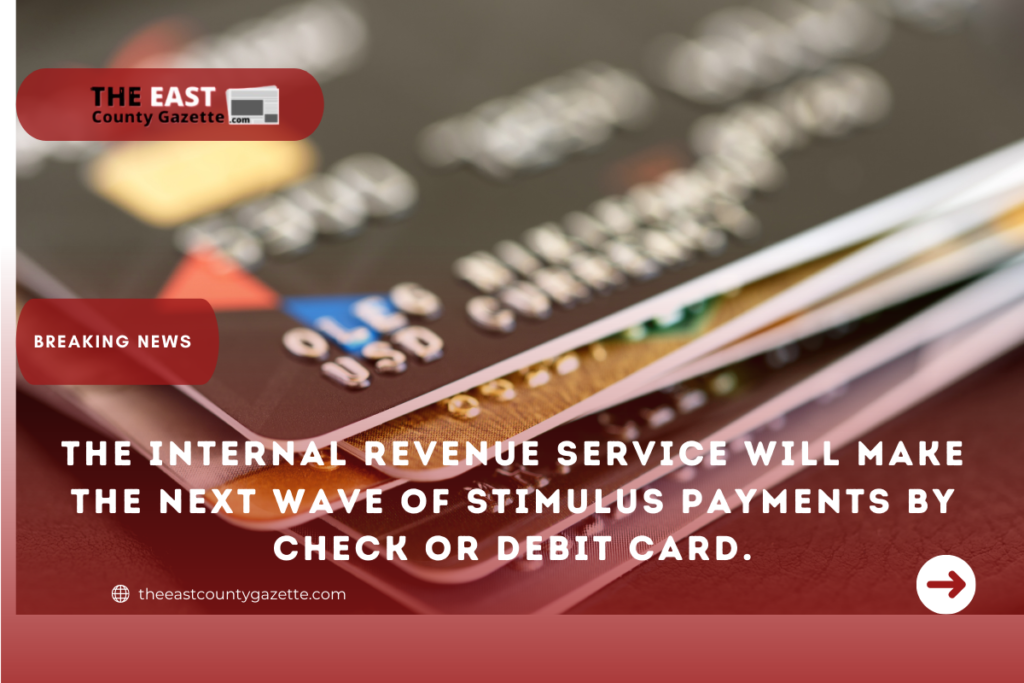It was reported today by the Internal Revenue Service that the next batch of Economic Impact Payments will be distributed to taxpayers this week, with the majority of these being issued in the form of paper checks or prepaid debit cards.
It is possible that some people will see these payments in their accounts earlier, possibly as provisional or pending deposits.

For taxpayers who receive direct deposit, this batch of payments began processing on Friday and will have an official pay date of Wednesday, March 24, with some people seeing these payments in their accounts earlier, possibly as provisional or pending deposits.
A considerable number of payments from this latest batch will be mailed, so taxpayers who have not received a direct deposit by March 24 should keep an eye out for a paper check or a prepaid debit card, known as an Economic Impact Payment Card, or EIP Card, in the mail in the coming weeks.
The majority of people will not be required to take any action in order to receive this round of Economic Impact Payments (EIPs). People can check the Get My Payment service on IRS.gov to discover if their payment has been scheduled if one has been planned for them.
Commissioner Chuck Rettig of the Internal Revenue Service stated, “The IRS continues to issue the third batch of stimulus funds in record speed.” “Because this new batch of payments will involve a greater number of mailed payments, we encourage customers to closely monitor their mail in the coming weeks for a check or debit card.”
Immediately following the passage of the American Recovery and Reinvestment Act on March 11, the Internal Revenue Service began delivering the third batch of Economic Impact Payments. On March 12, the Internal Revenue Service began disbursing the first batch of $1,400 stimulus payments, which were largely made via direct deposit.
The second set of payments was made today, with future payments expected to be made on a weekly basis in the coming weeks. The great majority of taxpayers who are eligible for EIPs will get their benefits through direct deposit.
Read More: Why Are Food Shortages Persistent in 2022?
Additionally, the Internal Revenue Service and the Bureau of the Fiscal Service took advantage of data in their systems to convert a large number of payments to direct deposits that would otherwise have been delivered as paper checks or debit card transactions.
This resulted in the disbursement of these monies being expedited by several weeks.
Keep an eye out for paper cheques and EIP Cards in the mail.
Taxpayers should be aware that the manner of payment for the third EIP may differ from the mode of payment for the previous stimulus payments.
An increasing number of people are receiving direct deposits, while others who receive them through the mail may receive either a paper check or an EIP Card — which may be different from how they received their earlier stimulus payments.
The Internal Revenue Service and the Treasury Department advise eligible individuals who have not yet received a direct deposit to keep an eye on their mail during this time period.
Paper checks will be mailed to you in a plain white envelope from the United States Department of the Treasury (USDT). For taxpayers who received their tax refund by mail, this paper check will look similar to the last one, with the exception that it will be identified as a “Economic Impact Payment” in the memo field.
The EIP Card will also be packaged in a white envelope with the seal of the United States Department of the Treasury conspicuously displayed. The front of the card bears the Visa logo, and the back bears the logo of the issuing bank, MetaBank, N.A.
The card will come with information explaining that it is an Economic Impact Payment, which will be included with the card. Detailed instructions on how to safely activate and use the card will be included in each shipment.
It is vital to remember that none of the EIP cards given for any of the three rounds will be reloadable; recipients will each receive a distinct card and will not be able to add funds to an existing card if they have already done so. EIP Cards are a safe, simple, and secure method of payment.
EIP Card recipients can use their cards to make purchases on the internet or in stores that accept Visa Debit Cards. No costs are charged for using domestic in-network ATMs to withdraw cash, transfer funds to a personal bank account, or obtain a replacement EIP Card if necessary.
The balance of their card can be checked online, using a mobile application, or over the phone without paying any costs. Consumers can use the EIP Card to protect themselves against fraud, loss, and other types of problems.
Read More: Democrats Contemplate Ways to Resurrect the Child Tax Credit
The EIP Card is sponsored by the Bureau of the Fiscal Service and is issued by MetaBank, N.A., which serves as Treasury’s financial agent in the United States. Individuals who receive a prepaid debit card are not chosen by the Internal Revenue Service.

